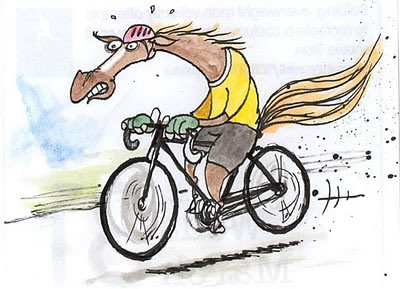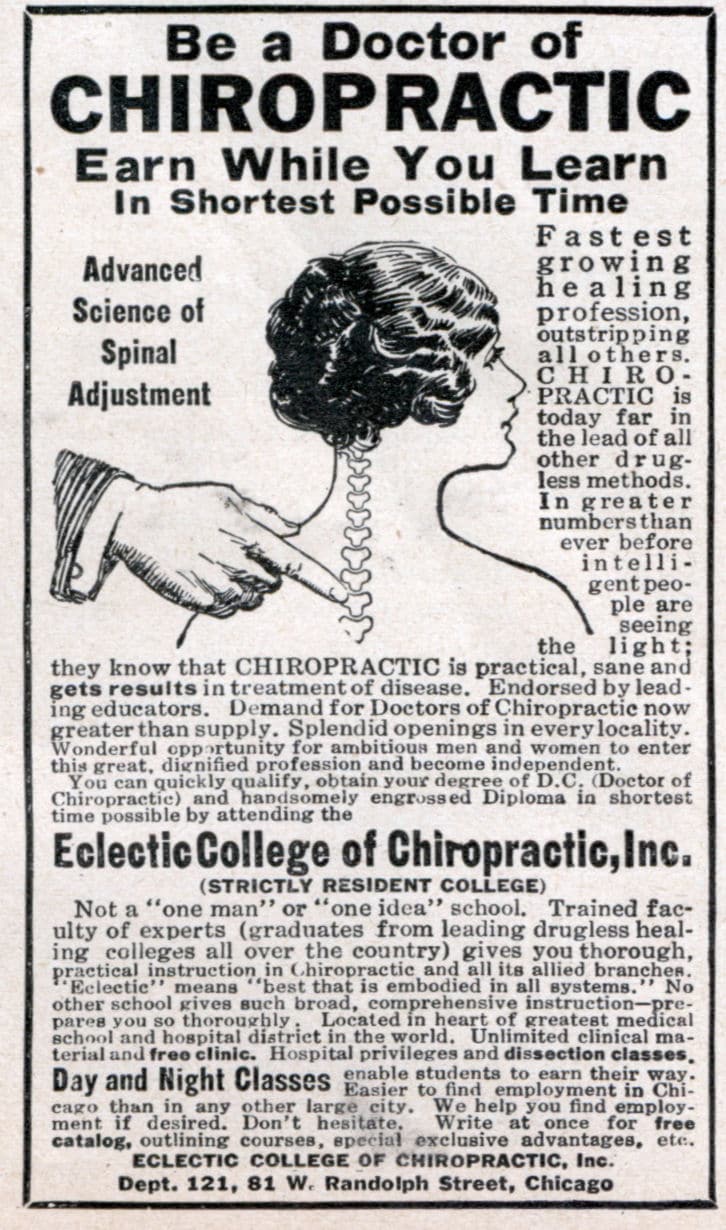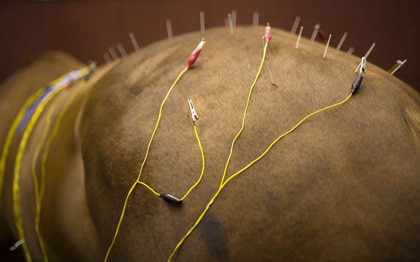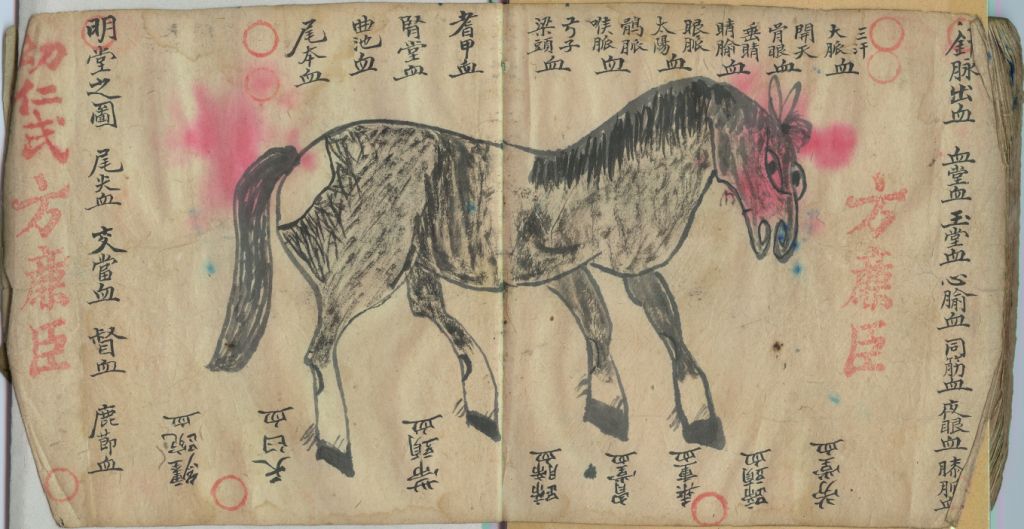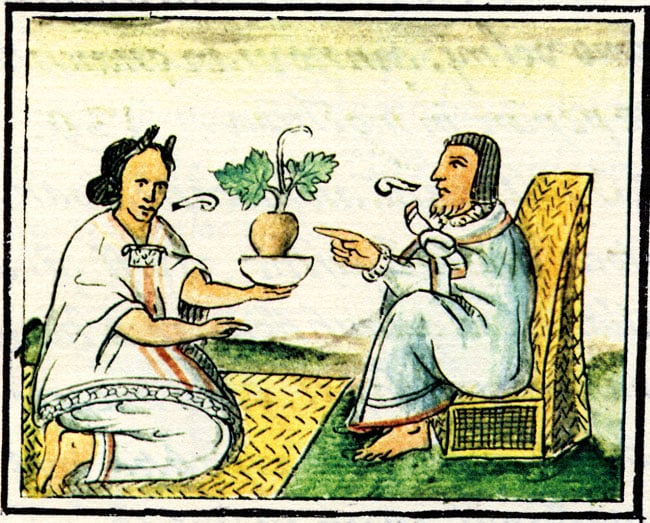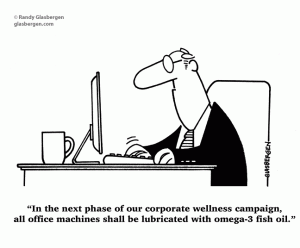
Cartoon displayed with special permission from http://www.glasbergen.com
Please visit http://www.cafepress.com/glasbergen
A fairly new concept has been introduced into horse health care (and into human health care, too). You’ve undoubtedly been pounded to death with it. It’s called “wellness.” And I’m not sure I like it.
While the word “wellness” has been around for a while, the term is a relative newcomer when it comes to health care. As documented in a 2010 article in the New York Times, the word was first championed in the 1950’s by Halbert L. Dunn, chief of the National Office of Vital Statistics. Dunn was looking for new terminology to convey the idea that there are things that people can do for their health beyond simply avoiding sickness and things that are bad for you. “Wellness” was the term he came up with.
Despite some initial misgivings – such as, whatever happened to plain old “health?” – momentum for the term gained steam over the decades, and you can now enroll in wellness programs at work, get “wellness” treatments at your local spa, and peruse the aisle of you local pharmacy looking for this, that, or the other “wellness” treatment.
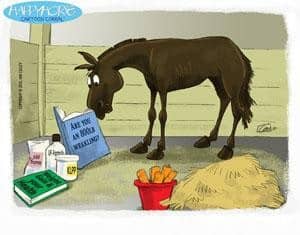 Of course, horses get in on the W-word action, as well; you can find any number of services, books, products and even centers that are devoted to the keeping your horse “well.” However, when it comes to keeping your horse healthy, I’m not so sure that the concept of “wellness” is serving horse owners, well, all that well.
Of course, horses get in on the W-word action, as well; you can find any number of services, books, products and even centers that are devoted to the keeping your horse “well.” However, when it comes to keeping your horse healthy, I’m not so sure that the concept of “wellness” is serving horse owners, well, all that well.
Health for horses was once something that came from following a few basic principles – good food, regular exercise, fresh water, etc. By providing a few good things, and by avoiding things that were harmful (say, parasites, or barbed wire), people’s horses had a reasonable expectation of health, and a good, long life. I mean, fundamentally, horses are pretty healthy. They’re vegetarians. Horses don’t do things that give their owners health problems, such as smoking, or drinking, or failing to exercise. You could do worse, health wise.
However, the new “wellness” has brought about some significant changes in people’s perceptions of how to keep their horse(s) healthy. Instead of “health” being something that, in most cases, is pretty much the norm, “wellness” has become something that needs to be actively pursued (at least according to the folks that are pushing “wellness”). And, by golly, turns out that there are lots of folks that are lining up in that pursuit, marketing a seemingly endless array of products and services.
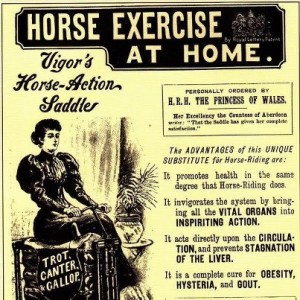 HOW TO KEEP YOUR HORSE HEALTHY (the old way)
HOW TO KEEP YOUR HORSE HEALTHY (the old way)
1. Make sure he’s got access to unlimited amounts of fresh, clean water.
2. Feed him appropriately.
3. Exercise him regularly.
4. Keep him away from things like barbed wire, sharp cans, rabbit holes, and live electrical wires.
ASIDE: I believe that horses are a biological system that is dedicated to doing itself harm, looking only for an inconvenient time at which to do it. You don’t want to do anything to encourage them, or make it easy for them.
5. Deworm him and vaccinate him on occasion.
ANOTHER ASIDE: Deworming and vaccinating with what, and for what, depends, to a large extent, on the circumstances in which your horse lives. I for example, am trying to get people to stop deworming their horses so often. The way that things have been done for decades doesn’t make any sense.
6. Take care of his hooves, when needed.
7. Look in his mouth every once in a while, and while being conservative, take care of any problems.
HOW TO KEEP YOUR HORSE HEALTHY (the new way)
1. Make sure he’s got access to unlimited amounts of clean, fresh water. Not much to change there, wellness-wise.
2. Feed him. Give him a vitamin and mineral supplement. Given him a digestive system conditioner. Don’t forget the probiotics. Electrolytes in the summer. Make sure that he doesn’t have too much protein, carbohydrate, and that his feed has a low glycemic index. Throw in some “senior” for a treat. Horse cookies are nice, too.
3. Exercise him regularly. Get him a massage, or “bodywork” to help with the soreness he may or may not have. Give him a chiropractic adjustment to make sure his spine or ribs (or something) isn’t out of place. Stick needles in him on occasion. Put him under a magnetic blanket – or any blanket. Feed him a joint supplement. Inject him with Legend® or Adequan®. Get his joints injected from time to time for “maintenance.”
4. Keep him away from barbed wire, etc. That one seems to have stood the test of time. What else is there to add?
5. Deworm and vaccinate him occasionally. Make sure that you rotate your dewormers regularly, or only rotate them every year. Whatever the kid who works at the feed store – between shooting video game creatures and texting – suggests. Depending on where your live, and what your horse does, your vaccine choices could be almost endless. And you can probably buy them at the feed store, too.
6. Take care of his hooves, when needed. Get a “specialist” in equine podiatry to make sure that the hoof is precisely balanced. Make sure that you use a hoof ointment. And, of course, you’ll probably need hoof supplements, too.
7. Look in his mouth every once in a while, and remove sharp points and edges. Get a dental “specialist” to do an “occlusal equilibration,” because heaven knows how bad things might get if your horse’s mouth wasn’t properly equilibrated (according to the precise standards set by the person doing the job – everyone else is probably wrong). Do this a couple of times a year, minimum. You never know when a dental problem might be around the bend.
But even with all that, you probably haven’t thought of something. What if your horse gets attacked by a rhinoceros? Damage from a stampeding rhino could be catastrophic. Just like joint problems, or digestive problems, or hoof problems, or hoof problems, you never know when one of those 3 ton marauders might take down your horse’s stall (or barn, or corral, or whatever – rhinos are really big).
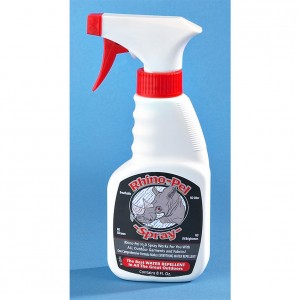 Can’t be too careful. So, I have a solution. I have this product I’d like to sell you. It’s called Rhino-Pel©
Can’t be too careful. So, I have a solution. I have this product I’d like to sell you. It’s called Rhino-Pel©
It’s not the same as the product on the right, which, as far as I know, is a great water repellent product. You don’t want to get confused.
As far as your horse’s wellness, mine’s better.
If you use it, you’re guaranteed not to see any rhinoceroses around your horse’s stall.*
NOTE: I think that a rhinoceros is one of the world’s coolest animals. CLICK HERE to learn more about them.
SECOND NOTE: Three of the world’s five species of rhinoceros are endangered, in part because people insist on killing them to cut off their horns, which, as a “traditional” medicine, are supposed to good for male potency. It’s called sympathetic magic – the part of the rhinoceros is supposed to make part of the man who takes it look like the part of the rhinoceros that was cut off. Seriously.
Anyway, I promise you that if you use my Rhino-pel®, your horse won’t be threatened by arguably one of the world’s most dangerous land mammals. Talk about wellness! Double-your-money-back guarantee, too.
Want to buy it?
Well, of course not (at least I hope of course not, because I really don’t have any). But the fact is, rhinos are a very real danger (at least in places where there are rhinos). But you can’t be too careful. So, if you don’t see a rhino, does that mean that my product worked? I mean, come on, what are the chances of a rhino showing up unannounced – or even in response to a formal invitation – at your horse’s stall or paddock?
Real “welleness” isn’t about giving products that may not do anything. There’s no reason to try to prevent something that’s unlikely to happen – or that you can’t predict will happen – with a product that hasn’t been shown to work. And, even if you were worried (and I hope you have lots more things to worry about then whether a rhinoceros lumbers up to your horse), wouldn’t you want to have some proof that my Rhino-Pel® actually did the trick? The thing is, my Rhino-Pel® marketing campaign is the exact line of reasoning that is used to sell all sorts of “wellness” stuff to horse owners.
Take joint supplements. Despite all the fictional claims made by the companies selling these equine joint supplements, there is no good scientific evidence that any of them do anything to prevent arthritis.
A QUESTION: And, just exactly how are you supposed to know if your horse is going to get arthritis, may I ask? If your horse doesn’t get arthritis, does that mean the supplement worked? How about my rhino repellent?
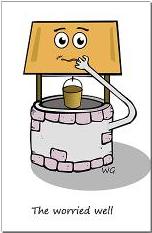 I understand. You care about, and love, your horse. That’s a wonderful thing. But the measure of health and wellness is NOT how much you spend on your horse. In fact, in human medicine, it’s been shown that increased expenditures on health care are associated with WORSE health. In fact, the most lavish spenders on health services are considerably less healthy than other people. They’ve been called the “worried well” – people who are healthy but are worried about becoming ill and so take medication or see a doctor when they don’t need to. And it’s exactly at those people that the providers of “wellness” for horses are aiming.
I understand. You care about, and love, your horse. That’s a wonderful thing. But the measure of health and wellness is NOT how much you spend on your horse. In fact, in human medicine, it’s been shown that increased expenditures on health care are associated with WORSE health. In fact, the most lavish spenders on health services are considerably less healthy than other people. They’ve been called the “worried well” – people who are healthy but are worried about becoming ill and so take medication or see a doctor when they don’t need to. And it’s exactly at those people that the providers of “wellness” for horses are aiming.
If I had one of the two paths to choose, between the “old” way to health, and modern “wellness” way, I’d stick with the old way. It’s time-tested, and will save you a lot of money and anxiety in the long run.
It’s just that a lot of people don’t seem to want to tell you that.
**********************************************************************************************************
* NOTE: This guarantee is not applicable in certain parts of Africa and India. Also, the plural of rhinoceros is NOT rhinoceri. I checked.

